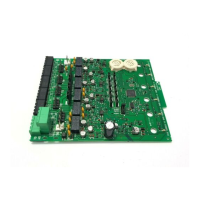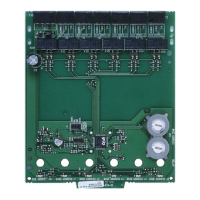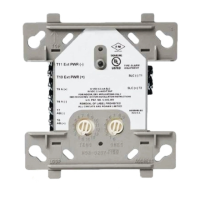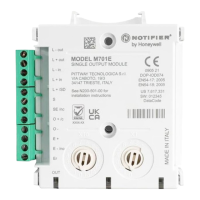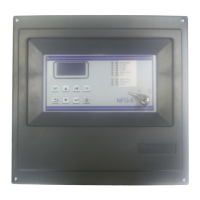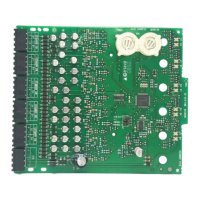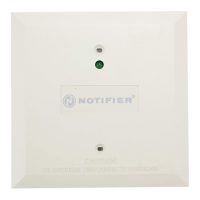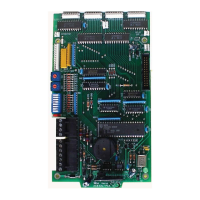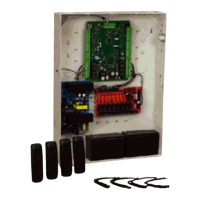112 SCS Series Manual — P/N 15712:L 7/18/16
Ratings and Wiring Diagrams Dedicated Smoke Control System Wiring Diagrams
essary to cut the power to the fan: one is sufficient. When power is cut to the fan, the fan is OFF and the sail switch is CLOSED, indicating no
airflow in the duct. The VER
ON⁄OP
MM monitors the OPEN position of the sail switch, which would indicate when the fan is ON. In this case
the VER
ON⁄OP
MM is deactivated because the fan is OFF and the sail switch is CLOSED.
The use of switch group type 8 would never be necessary in a dedicated system unless there were a need for redundancy in
OFF and ON con-
trol. Type 8 is used for
ON and OFF control and verification of the ON state. When the CON
ON⁄OP
CM is deactivated, the CON
OFF⁄CL
CM is
activated, and vice versa. The CON
ON⁄OP
CM controls a normally open contact which switches power to the fan. The CON
OFF⁄CL
CM con-
trols a normally closed contact which switches power to the fan. When the CON
ON⁄OP
CM is deactivated, the contact is open, thus cutting
power to the fan. When the CON
OFF⁄CL
CM is activated, the contact is open, thus cutting power to the fan. Both control modules are not nec-
essary to cut the power to the fan: one is sufficient. When power is cut to the fan, the fan is
OFF and the sail switch is CLOSED, indicating no
airflow in the duct. The VER
ON⁄OP
MM monitors the OPEN position of the sail switch, which would indicate when the fan is ON. In this case
the VER
ON⁄OP
MM is deactivated because the fan is OFF and the sail switch is CLOSED.
The use of switch group type 9 would never be necessary in a dedicated system unless there were a need for redundancy in
OFF and ON con-
trol. Type 8 is used for ON and OFF control and verification of the ON and OFF state. When the CON
ON⁄OP
CM is deactivated, the
CON
OFF⁄CL
CM is activated, and vice versa. The CON
ON⁄OP
CM controls a normally open contact that switches power to the fan. The
CON
OFF⁄CL
CM controls a normally closed contact that switches power to the fan. When the CON
ON⁄OP
CM is deactivated, the contact is
open, thus cutting power to the fan. When the CON
OFF⁄CL
CM is activated, the contact is open, thus cutting power to the fan. Both control
modules are not necessary to cut the power to the fan: one is sufficient. When power is cut to the fan, the fan is
OFF and the sail switch is
CLOSED, indicating no airflow in the duct. Since it is possible to determine both ON and OFF verification from switch group type 7 or switch
group type 8, switch group type 9 would only be necessary for redundancy in verifying the state of the fan. For example, if switch group type
7 is used instead of switch group type 8, the
OFF state of the fan would be verified when the monitor module is activated and the ON state of
the fan would be verified when the monitor module is deactivated. Utilizing switch group types 7 or 8 also saves the use of an additional
monitor module. Switch group type 9 would use two monitor modules to provide the same verification as types 7 or 8.
